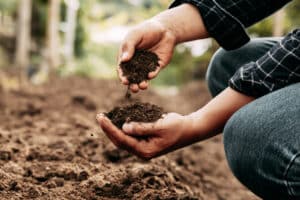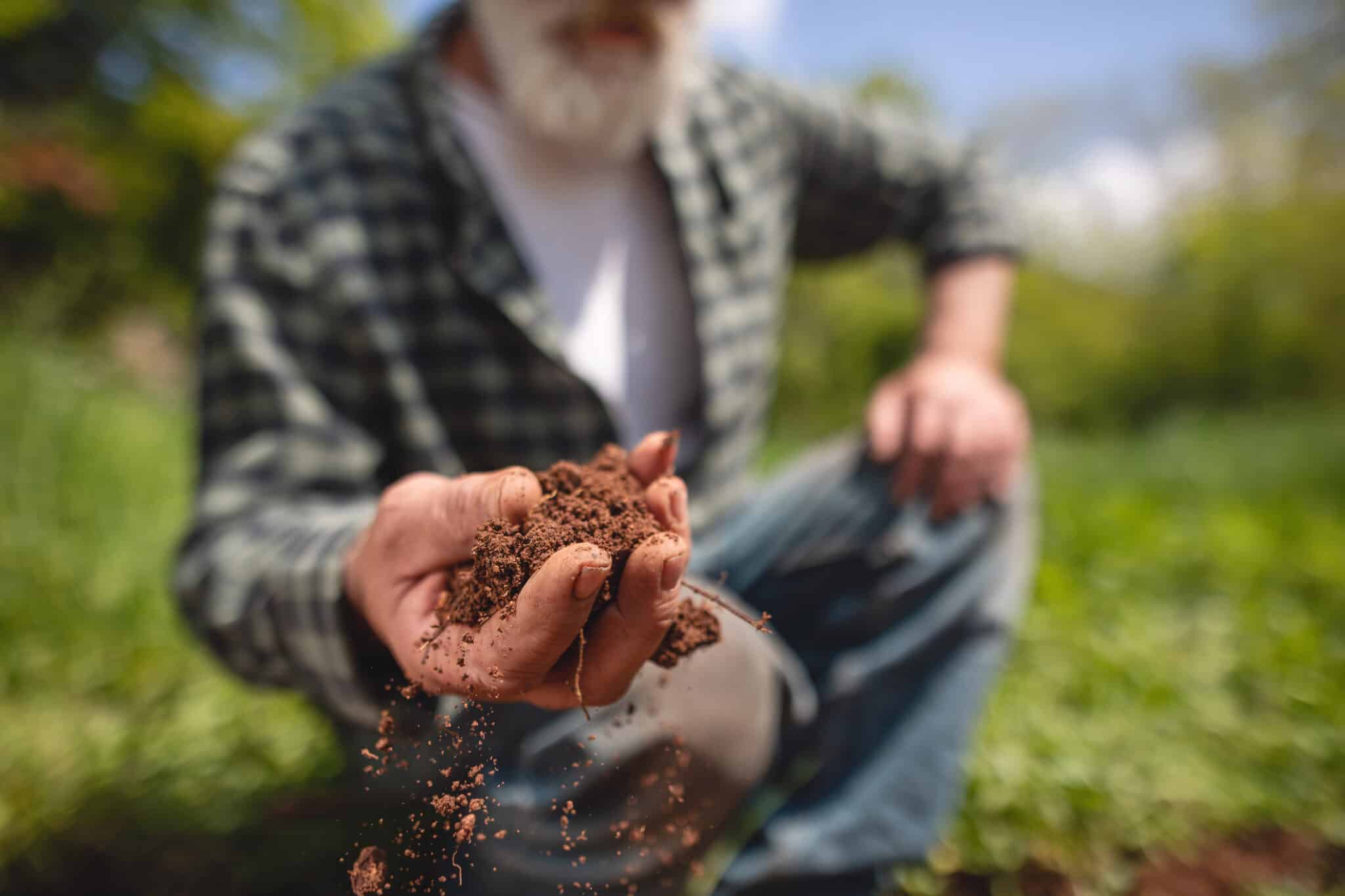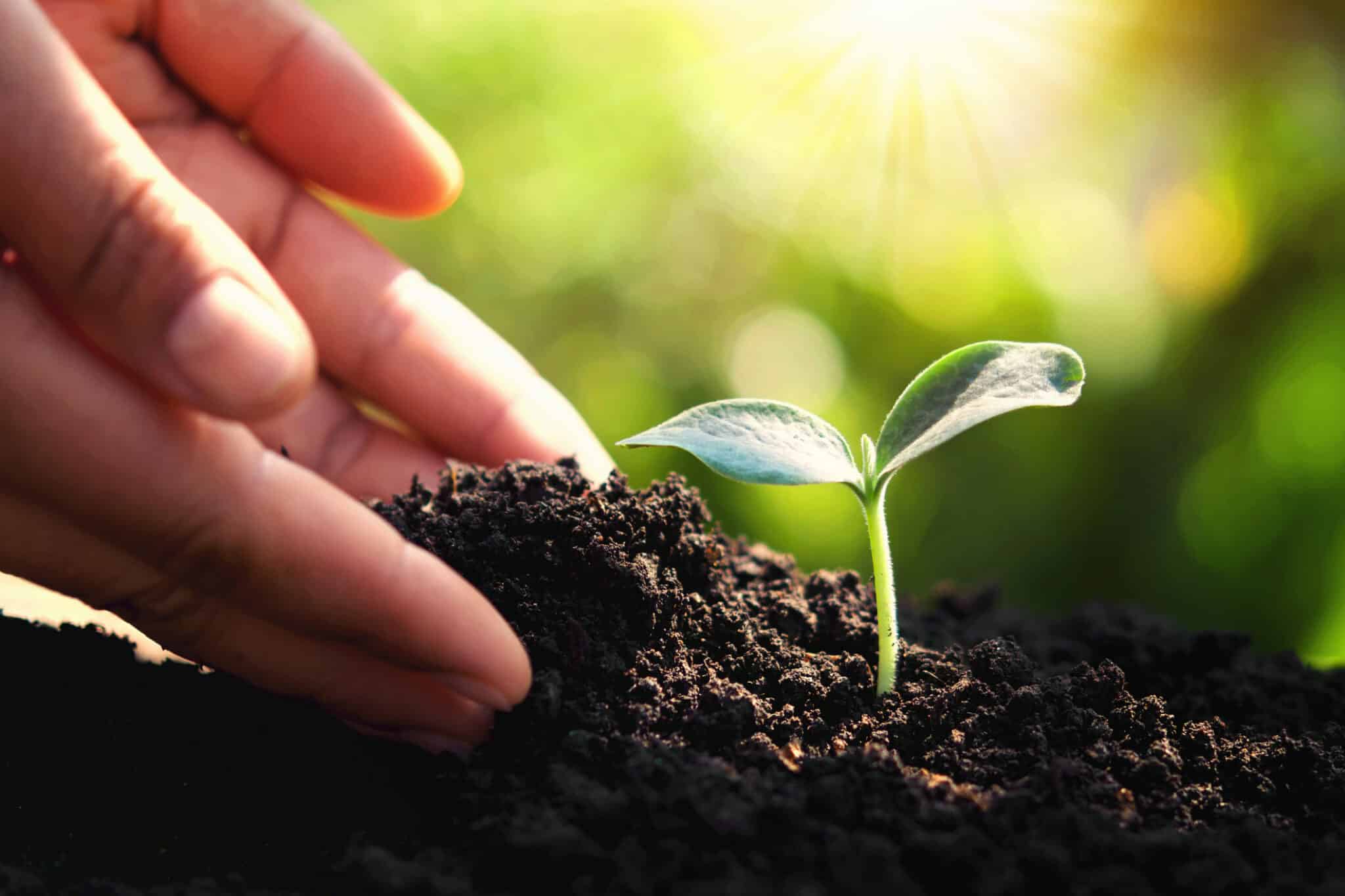The Importance of Soil Health for Trees
Do you ever wonder why some trees in your neighborhood flourish while others struggle? The secret lies beneath the surface: soil health. Healthy soil is the foundation for strong, vibrant trees and plants.
Whether you’re in Dallas, Fort Worth, or Prosper, TX, understanding and maintaining your soil can make all the difference.
In this blog, we’ll explore what makes soil healthy, why it matters, and how you can improve it to ensure your trees thrive. Let’s dig in and uncover the secrets of healthy soil!

Understanding Soil Health
What is Soil Health?
Soil health is all about how well the soil can support plants, animals, and even people. It’s like the soil’s report card, showing how good it is at doing its job.
When the soil is healthy, it’s full of life and can help grow strong trees and plants. In places like Dallas, Fort Worth, and Prosper, maintaining healthy soil is essential for beautiful, thriving trees.
Key Indicators of Healthy Soil
To know if your soil is healthy, here are some things to look for:
- Soil Structure: Healthy soil feels crumbly in your hands. This means it’s good at letting air and water move through it. If your soil is too hard or too sandy, it might need some help.
- Organic Matter: This is stuff like old leaves and dead plants that have broken down. The more of this, the better!
- Soil Color: Dark brown or black soil usually means it has lots of organic matter. Light-colored soil might be lacking in nutrients.
The Role of Microorganisms in Soil Health
Tiny organisms like bacteria and fungi live in the soil and play a big role in keeping it healthy. They break down organic matter, help plants get nutrients, and even protect plants from diseases.
Think of them as the unseen helpers that keep the soil in tip-top shape. Without these microorganisms, the soil wouldn’t be able to support trees and plants very well.
So next time you’re out in the garden, remember that there’s a whole world of tiny helpers under your feet!
Benefits of Healthy Soil for Trees
Enhanced Root Development
Healthy soil is like a superfood for tree roots. When the soil is full of nutrients and has a good structure, tree roots can grow deep and strong.
This means the trees are more stable and can stand up better to strong winds and storms.
Having strong roots is especially important for the overall health and stability of the trees. Plus, well-developed roots help trees absorb more water and nutrients, making them healthier overall.
Improved Nutrient Uptake
Trees need a variety of nutrients to grow and thrive, and healthy soil makes it easier for them to get what they need.
When the soil is rich in organic matter and microorganisms, it breaks down nutrients and makes them available to tree roots. This means your trees will have access to a balanced diet of essential minerals and vitamins.
Just like how we feel better when we eat a healthy meal, trees grow better when their soil is nutrient-rich.
Increased Resistance to Diseases and Pests
Healthy soil can help your trees fight off diseases and pests. When the soil is in good condition, it supports a diverse community of microorganisms that can protect trees from harmful pathogens.
These beneficial microbes act like natural defenders, keeping the bad guys at bay. Additionally, trees growing in healthy soil are generally stronger and more resilient, making them less likely to get sick or be damaged by pests.
Factors Affecting Soil Health
Soil Composition and Structure
The makeup and arrangement of soil particles play a crucial role in soil health. Good soil structure means there are plenty of spaces for air and water to move through, which is essential for root growth.
Soil can be sandy, clayey, or loamy, and each type has different characteristics. Loamy soil, with its balanced mix of sand, silt, and clay, is generally the best for plant health.
Organic Matter Content
Organic matter is like a powerhouse for soil health. It includes decomposed plants, animals, and microorganisms that enrich the soil with nutrients. High organic matter content improves soil structure, water retention, and nutrient availability.
Adding compost or mulch to your garden can significantly boost the organic matter in your soil. Not only does this make the soil more fertile, but it also encourages the growth of beneficial microorganisms.
Soil pH Levels
Soil pH is a measure of how acidic or alkaline the soil is, and it has a big impact on plant health. Most trees prefer a slightly acidic to neutral pH (around 6 to 7).
If the soil is too acidic or too alkaline, it can prevent trees from absorbing essential nutrients. You can test your soil’s pH using a simple test kit and amend it with lime to raise pH or sulfur to lower it.
Moisture and Drainage
Proper moisture and drainage are vital for healthy soil. Soil that holds the right amount of water supports root health and prevents diseases.
If the soil drains too quickly, it can dry out the roots, while poor drainage can lead to waterlogged roots and root rot. Ensuring that your soil has good drainage while retaining enough moisture is key.

Assessing Soil Health for Your Trees
Soil Testing Methods
To truly understand the condition of your soil, it’s important to test it. There are several methods you can use for this. Basic soil test kits can be found at garden centers and provide information on pH levels and nutrient content.
For a more detailed analysis, you might consider sending a soil sample to a laboratory. Lab tests can give you a comprehensive overview, including organic matter content, soil texture, and more.
Interpreting Soil Test Results
Once you have your test results, it’s time to interpret them. Look at the pH level first to see if it falls within the ideal range for your trees. Next, check the nutrient levels such as nitrogen, phosphorus, and potassium.
If any of these are low, you’ll need to amend your soil accordingly. Organic matter content is another critical factor; higher levels generally indicate healthier soil.
Common Indicators of Healthy Soil
There are a few common indicators that can tell you a lot about your soil’s condition. Healthy soil typically has a dark color, which suggests high organic matter content.
It should also have a pleasant, earthy smell, which indicates the presence of beneficial microorganisms. Good soil crumbles easily in your hand, showing that it has a good structure.
Practices to Improve Soil Health
Incorporating Organic Matter
One of the best ways to enhance your garden is by adding organic matter. This includes things like compost, manure, and decomposed leaves. Organic matter helps to improve soil structure, water retention, and nutrient content.
By regularly adding compost to your garden, you can boost the fertility and health of your soil. Not only does this make the soil more nutrient-rich, but it also supports the growth of beneficial microorganisms that help trees thrive.
Utilizing Cover Crops
Cover crops are plants grown primarily to benefit the soil rather than for harvest. They help prevent erosion, improve soil structure, and add nutrients to the soil when they decompose. Some popular cover crops include clover, rye, and legumes.
Planting cover crops during the off-season or in bare patches can significantly enhance the soil’s condition. These plants also help suppress weeds and reduce the need for chemical fertilizers.
Mulching Techniques
Mulching is a simple yet effective practice for improving your garden. By covering the soil with a layer of mulch, you can help retain moisture, regulate soil temperature, and reduce weed growth.
Organic mulches, such as wood chips, straws, or leaves, also decompose over time, adding valuable organic matter to the soil.
Mulching around your trees not only protects the soil but also provides a continuous source of nutrients as the mulch breaks down.
Reducing Soil Compaction
Soil compaction can be a major barrier to healthy tree growth. Compacted soil has fewer air pockets, making it harder for roots to grow and access water and nutrients.
To reduce soil compaction, avoid walking or driving over wet soil, as this can compress it further. Using techniques like aeration, which involves making small holes in the soil, can help improve soil structure.
The Impact of Soil Health on Tree Growth
The connection between soil and tree growth is profound. Healthy soil provides the essential nutrients, water, and support that trees need to grow strong and tall.
When the ground is in good condition, tree roots can spread out and access the resources they need. This leads to vigorous growth, lush foliage, and an overall healthier tree.
Maintaining healthy soil has long-term benefits for tree longevity. Trees growing in nutrient-rich, well-structured soil are more likely to live longer and withstand environmental stresses.
Healthy soil acts as a buffer against extreme weather conditions, such as droughts or heavy rains, by providing better moisture retention and drainage.
Soil Health Management Strategies
Sustainable Soil Management Practices
Sustainable soil management practices are essential for maintaining long-term soil health. These practices include crop rotation, which helps prevent soil depletion by alternating the types of crops grown in a specific area.
Another strategy is using organic fertilizers instead of chemical ones to enrich the soil without harming the environment. Additionally, avoiding over-tilling preserves soil structure and prevents erosion.
Integrated Soil Fertility Management
Integrated soil fertility management (ISFM) combines various techniques to enhance soil fertility holistically.
This approach includes the use of both organic and inorganic fertilizers, efficient water management, and the incorporation of crop residues back into the soil.
ISFM emphasizes the importance of understanding the specific needs of your soil and trees to create a balanced nutrient supply.
Practices for Different Types of Trees
Different trees have varying soil requirements, and tailoring soil management practices to meet these needs is crucial.
For example, fruit trees often require soils rich in potassium and phosphorus, while coniferous trees thrive in slightly acidic soils.
Understanding the specific needs of the trees in your garden or landscape allows you to adjust your soil health strategies accordingly.
Challenges in Maintaining Soil Health
Common Soil Health Issues
Maintaining good soil conditions can be challenging due to various common issues. Soil erosion, caused by wind and water, can strip away nutrient-rich topsoil. Compaction, often from heavy machinery or foot traffic, can reduce air and water flow to the roots.
Nutrient depletion occurs when soil is repeatedly used for the same crops without replenishing essential minerals.
Solutions for Soil Degradation
Fortunately, there are effective solutions for combating soil degradation. To prevent erosion, you can plant cover crops or use mulch to protect the soil surface.
Aeration and adding organic matter can alleviate compaction by improving soil structure and increasing porosity.
Rotating crops and using organic fertilizers help restore depleted nutrients, ensuring the soil remains fertile.
Addressing Soil Contamination
Soil contamination can be a serious problem, but it can be addressed with the right strategies. One effective method is phytoremediation, which involves planting specific types of plants that can absorb and break down pollutants.
Testing your soil regularly for contaminants helps identify any issues early. Reducing the use of chemical pesticides and fertilizers can also prevent further contamination.
Engaging Professionals for Soil Health
When to Consult a Soil Health Professional
Knowing when to consult an expert can make a significant difference in the health of your trees. Persistent issues like poor tree growth, discoloration of leaves, or frequent pest problems indicate the need for professional advice.
Experts can provide comprehensive soil testing and interpretation of results, which can be challenging to do on your own.
Benefits of Professional Soil Health Assessments
Professional assessments offer several benefits. Experts use advanced testing methods to provide a detailed analysis of your soil, including nutrient levels, pH balance, and the presence of contaminants.
This information is crucial for making informed decisions about soil amendments and treatments.
How to Find a Reliable Soil Health Professional
Finding a reliable professional is important for getting the best advice and service. Start by asking for recommendations from local gardening clubs, nurseries, or agricultural extensions.
Look for professionals with certifications and experience in soil science or agronomy. Reading reviews and testimonials can also give you insight into their reputation and quality of service.
Transform Your Trees Today with S&P Tree Service!
Are your trees struggling to thrive? Improve their health from the ground up with S&P Tree Service! Our expert team in Dallas, Fort Worth, and Prosper, TX, specializes in enhancing soil health to ensure your trees grow strong and vibrant.
Contact us today at 469-484-6585 to schedule a professional soil health assessment and give your trees the foundation they need to flourish.
FAQ on Soil Health for Trees
How often should I test my soil?
It’s recommended to test your soil at least once a year, preferably in the spring before planting. Regular testing helps you monitor conditions and make necessary adjustments to maintain optimal health for your trees.
What are the best organic materials to add to soil?
Compost, aged manure, and decomposed leaves are among the best organic materials to enrich soil. These materials improve structure, increase nutrient content, and support beneficial microorganisms, all contributing to healthier soil.
Can soil improvement practices benefit all tree species?
Yes, these practices can benefit all tree species. While different trees have specific soil preferences, methods like adding organic matter, maintaining proper pH, and ensuring good drainage universally enhance soil conditions and support tree health.
How can I tell if my soil is compacted?
Compacted soil is often hard and difficult to dig into. You might notice water pooling on the surface after rain or poor plant growth. A simple test is to push a stick or screwdriver into the soil; if it’s hard to penetrate, your soil is likely compacted.
Are there any quick fixes for poor soil conditions?
Quick fixes like adding compost or organic fertilizers can temporarily boost soil quality, but long-term improvement requires ongoing care. Practices like regular mulching, crop rotation, and reducing soil disturbance are essential for maintaining healthy soil over time.


